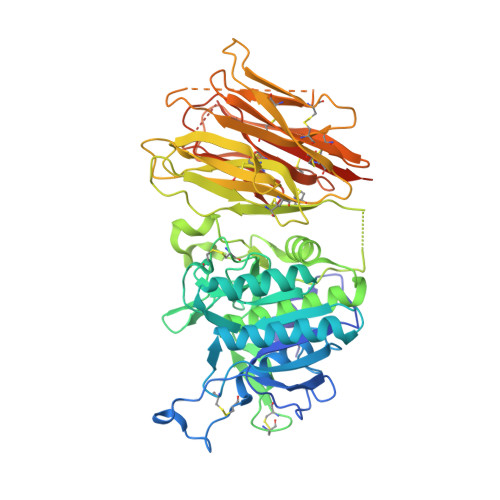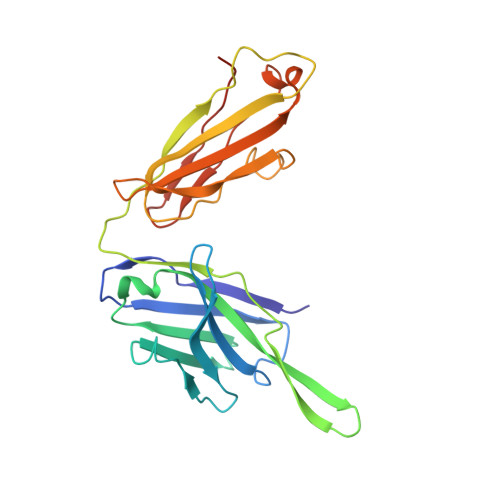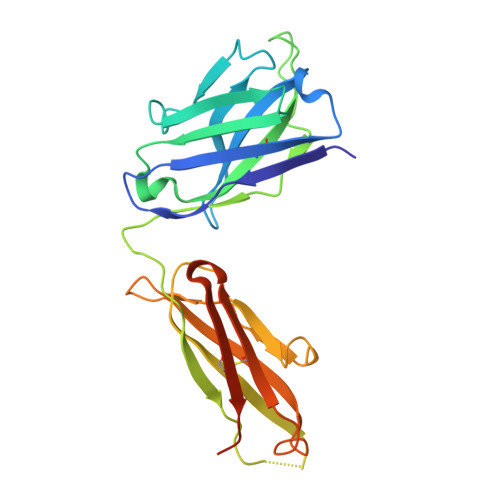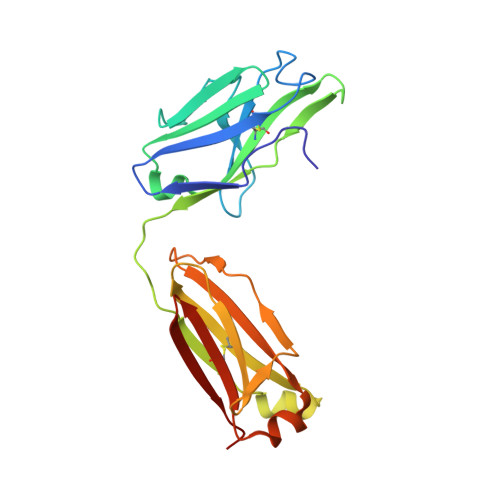An Antibody against the C-Terminal Domain of PCSK9 Lowers LDL Cholesterol Levels In Vivo.
Schiele, F., Park, J., Redemann, N., Luippold, G., Nar, H.(2014) J Mol Biol 426: 843-852
- PubMed: 24252255
- DOI: https://doi.org/10.1016/j.jmb.2013.11.011
- Primary Citation of Related Structures:
4K8R, 4LKC - PubMed Abstract:
Proprotein convertase subtilisin/kexin type 9 (PCSK9) is associated with autosomal dominant hypercholesterolemia, a state of elevated levels of LDL (low-density lipoprotein) cholesterol. Autosomal dominant hypercholesterolemia can result in severe implications such as stroke and coronary heart disease. The inhibition of PCSK9 function by therapeutic antibodies that block interaction of PCSK9 with the epidermal growth factor-like repeat A domain of LDL receptor (LDLR) was shown to successfully lower LDL cholesterol levels in clinical studies. Here we present data on the identification, structural and biophysical characterization and in vitro and in vivo pharmacology of a PCSK9 antibody (mAb1). The X-ray structure shows that mAb1 binds the module 1 of the C-terminal domain (CTD) of PCSK9. It blocks access to an area bearing several naturally occurring gain-of-function and loss-of-function mutations. Although the antibody does not inhibit binding of PCSK9 to epidermal growth factor-like repeat A, it partially reverses PCSK9-induced reduction of the LDLR and LDL cholesterol uptake in a cellular assay. mAb1 is also effective in lowering serum levels of LDL cholesterol in cynomolgus monkeys in vivo. Complete loss of PCSK9 is associated with insufficient liver regeneration and increased risk of hepatitis C infections. Blocking of the CTD is sufficient to partially inhibit PCSK9 function. Antibodies binding the CTD of PCSK9 may thus be advantageous in patients that do not tolerate complete inhibition of PCSK9.
Organizational Affiliation:
Structural Research Group, Boehringer Ingelheim GmbH & Co. KG, 88397 Biberach, Germany.



















